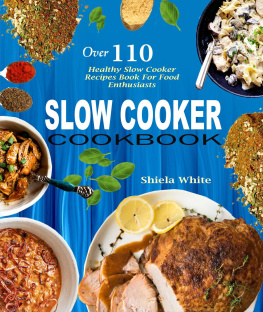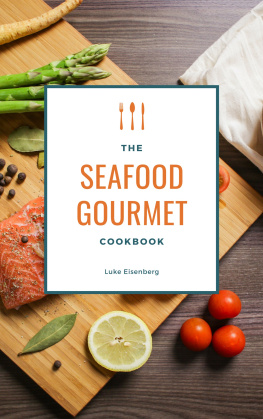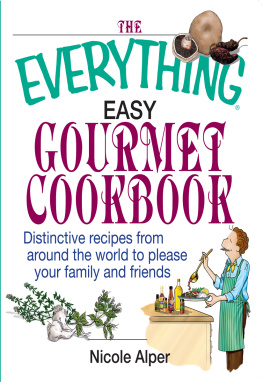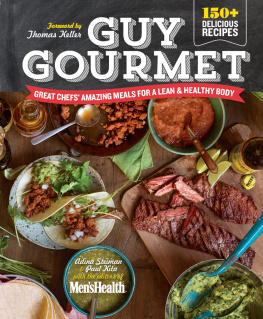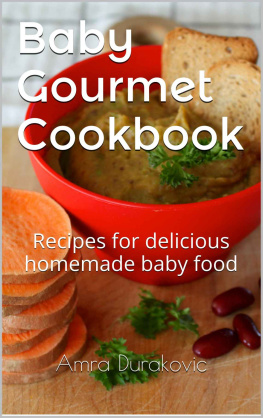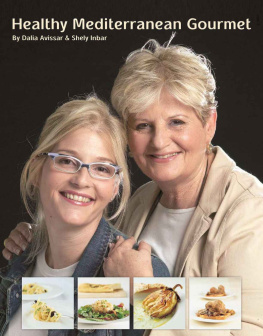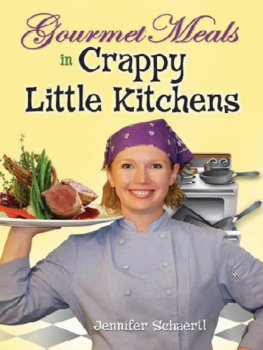. . . . ... .... ....
Introduction What?! You want to cook without a kitchen?! So youve decided that you want to be able to feed yourself, and possibly others, out of your kitchen-less dorm room. Congratulations! Thats the first step in becoming a master dorm room chef, capable of whipping up delicious creations out of what seems to be thin air. When I first arrived at Columbia University as an undergraduate, the sparkling new dorm room I shared with a fellow engineering major seemed tarnished only by the fact that there was no kitchen. As a teenager that prepared many of my own meals, it was a major disappointment. So, during my four years in the Ivy League, I compiled as much knowledge as I could about how to turn a few appliances and what little food I could fit in my mini-fridge into dorm room gourmet meals. I have, by now, realized that very few undergraduates have kitchens in their dorm rooms some dont even have access to cooking implements at all! So, I decided to share what I learned through trial and much error.
Ive tried to pack in as much easy-to-use, helpful information about healthy, fast, cheap and tasty cooking as possible. Believe me, I know what youre thinking. But this isnt going to teach you how to make 101 meals out of ramen noodles or call the pizza delivery guy. This book will be a great resource for impressing your friends, and yourself, with your ingenious cooking skills! The fact that the meals are fast, easy, and healthy will be our little secret. I hope you enjoy Dorm Room Gourmet and use it as I did often, shared with friends, and as a jumping off point for your own creations. Dont be afraid to make notes on the pages every dish comes out a little differently with each try.
The point isnt to follow a recipe but to be able to enjoy what you eat and serve. No stress, a little mess and a full stomach sounds like a great recipe to me! Tools of the Trade In this section of Dorm Room Gourmet, well teach you how to install a gas or electric oven under your school-provided computer desk. Oh, that doesnt like a good idea? We didnt think so either Before you make any big purchases or start hoarding your moms kitchen appliances under your bed, youll have to check with your college on their rules and regulations for dorm room cooking appliances. Ive never seen a school that doesnt allow a small refrigerator but beyond that, dont assume that everything else goes. Keep in mind that many colleges, like Columbia, have pretty lax enforcement agents. Your RA might look the other way if you have a rogue blender, but not at a toaster or something that could start a fire.
While Columbia didnt check my room, my brothers cooking days at George Washington University would have been numbered if they had caught him with any unauthorized materials. Just check on the rules, and know whether you have to follow them or not. Im not saying blatantly disregard everything they say if they arent going to enforce thembut Im just saying. So, on to our handy list of Dorm Room Gourmet tools. Now, go wild! Must Haves: Refrigerator Usually they must be 1.7 cubic inches or less. I recommend buying the biggest one possible, as most of your cooking will depend on chilling ingredients.
You can find these at a local department or housewares store. Utensils Forks and spoons are going to be your best friends, so stock up. If youre just serving yourself, Id have three of each so that you can use separate utensils to cook and eat. You can find cheap sets at Ikea, or go to your local Goodwill store and nab them for about 10 cents apiece. If youre entertaining, keep in mind that youll have to wash them all after the party so this might be a good time to break out that classy plastic cutlery. Plates and bowls Like utensils, these are essentials.
I discovered the joy of Ikeas 365+ bowls in college, and never needed another dish in my hour years. For under a dollar, these bowls are wide enough to use for soup, cereal and serving dishes but not so deep that you cant use them as plates. I found that I could buy 8 of these and only 2 plates, in case I was eating something I really needed to cut or otherwise required a flat surface. Dish soap This might seem self-explanatory, but dont use hand soap on your dishes. Your mouth will thank you. Dish towels I recommend having two of these one for drying some of the dishes and another if you decide to lay them out to air dry.
They are also good potholders. Invest in a decent quality set because cheap ones wont absorb much and will leave lots of nice, tasty lint behind. Your call. Wooden and slotted spoons These are great as they can be used for preparing and serving your food, and you cant destroy a wooden spoon unless youre doing something youre really, really not supposed to be doing with it. The slotted spoon is especially helpful when you need to strain something like pasta and dont want to invest in a strainer. These are also pretty prevalent at Goodwill or thrift stores.
Paper towels These are handy for lining your workspace in case of spills, cleaning up the spills when you miss the ones you laid out, and serving as napkins. You can also make them into party hats if the spirit moves you. Can opener You will learn to love canned foods during your college years and beyond. Trust me, tin never tasted so good. Large bowl A large bowl serves a variety of purposes. Your large bowl is great for popcorn, serving your friends, washing dishes in and storage.
This is one of the few times I recommend buying plastic, as other materials cant be used as freely and are more apt to break. Reusable water bottle This is also pretty self-explanatory, but it is really nice to not have to constantly buy bottles of water. If you keep more than one, you can also use them to store milk or juice you might, er, borrow from the dining hall. Ziploc bags and plastic storage containers I would recommend having at least one pack of re-sealable bags and one storage container whether you plan on getting deep into cooking or not. You never know when you can use one, and in the meantime you can repurpose it as storage for utensils or as a bowl. Sharp chefs knife Most schools should let you have one of these, and they are extremely handy.
I recommend one with a serrated edge and a pointy tip. Just be sure to use knife safety at all times. Please dont be that idiot who cuts himself making lime garnishes after eight margaritas and a keg stand. Just dont. Flexible cutting mat This is a handy little extra that you dont need, but is really nice to have. You can use these to chop vegetables with less mess than normal, plus they store and clean easily.
Beyond the Basics: Make sure your school allows these! Toaster oven If you can only have one cooking appliance in your dorm room, make it a toaster oven. You can make countless meals in a toaster oven from breakfast to dessert. And, you can adapt many oven recipes easily to a toaster oven, making it perfect for what youll read in this cookbook and beyond! Blender This is a great tool for making smoothies, margaritas, daiquiris, soups, salsas and about a million other things. The only issue you might have is that some arent easy to clean. If you dont think youll make frozen drinks with it, I actually recommend going with a stick hand blender instead. It provides all of the same functions except it wont crush ice easily and is easier to store and clean.
Microwave A microwave is a great tool for cooking and reheating anything you can imagine. I actually did not have a microwave when I was a freshman at Columbia and, obviously, survived without it. The only caveat was that I couldnt make my favorite food: popcorn. Go for the smallest one you can find. Water Boiler This is a joy that most people dont know, and I pity them. A water boiler can allow you to make so many more things beyond tea! You can find these for under $10 at a housewares store, but make sure that whatever model you get doesnt spurt out hot water at the spout when it is boiling.
Next page







